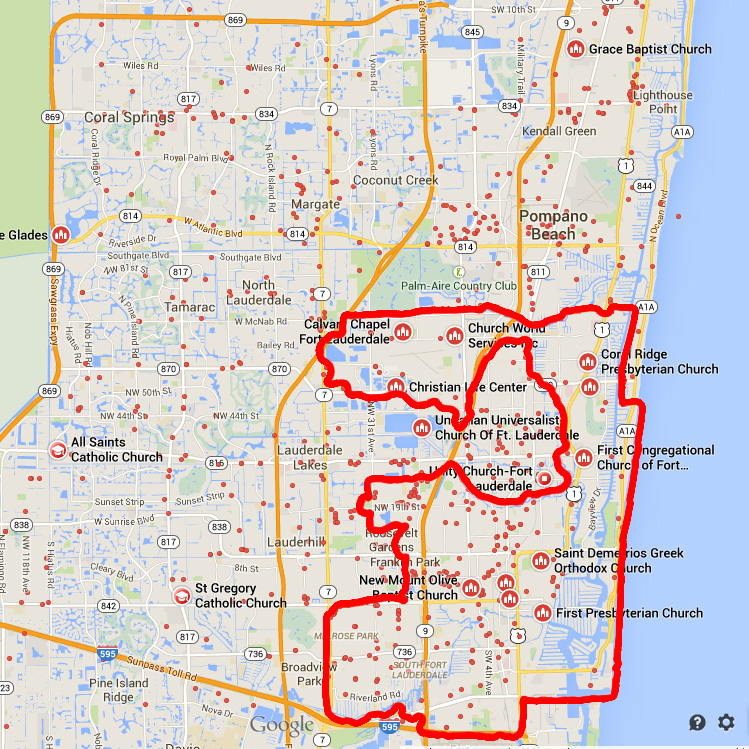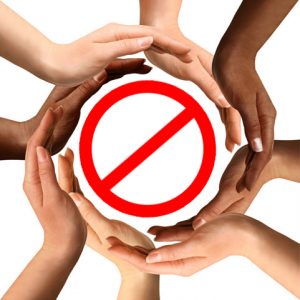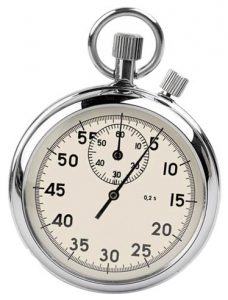 I’ve been thinking about feminism for a couple of years, and I’ve actually felt a certain amount of dread when I attempted to relate it to my conceptual work on Beta Culture. It’s completely obvious that Beta can’t work without a healthy respect for the needs of women, something better than what our western society has now, but I couldn’t see how ‘feminism’ – not the thing I want feminism to be, but the thing that it presently is – could be integrated into it without overwhelming the welcoming, inclusive vibe I wanted it to have.
I’ve been thinking about feminism for a couple of years, and I’ve actually felt a certain amount of dread when I attempted to relate it to my conceptual work on Beta Culture. It’s completely obvious that Beta can’t work without a healthy respect for the needs of women, something better than what our western society has now, but I couldn’t see how ‘feminism’ – not the thing I want feminism to be, but the thing that it presently is – could be integrated into it without overwhelming the welcoming, inclusive vibe I wanted it to have.
I may have figured something out:
Many times over the years, I’ve wondered why we humans find dichotomies so easy. Everything is
ONE THING, or ANOTHER
THIS thing, or the OTHER
FRIEND or ENEMY
LOVE or HATE.
My best guess is that it’s biological. We have two-lobed brains and bilateral symmetry, with a left side and a right. Presented with two-value choices down to our very bones, it actually takes a bit of work NOT to see things as just that simple.
And yet, very few things are as simple as Yes or No, Column A or Column B. In fact, any time you do see something as a simple dichotomy – Republican or Democrat – it’s a good bet you’re doing a disservice not only to the subject but to your own rational mind. Heck, even Alive or Dead isn’t as simple as it once was. There’s an infinity of real stuff between every one-or-the-other choice, and this is never more true than when you’re dealing with human social matters.
Black OR white: As I wrote in a recent post, if you view people through the filter of “race,” you will see “black people” and “white people,” despite the fact that none of us are actually black or white. Just the “black” people alone come in shades more varied than the rainbow. Besides which, there are many more “races” than just the two.
Liberal OR conservative: I consider myself a fairly liberal person. Yet if there was a list of 20 items that make up a staunch liberal in today’s sociopolitical atmosphere, beliefs and attitudes and goals, I might fit only 80 or 90 percent of them. There are things I disagree with fellow liberals about. Given that same list for identifying conservatives, I would fit only a small percentage of them … but I think there would be some.
The fact is, if you’re the type of person who actually thinks about things, you will – in fact, you MUST – often come up at least slightly at odds even with the people you most identify with. I loved my Cowboy Dad out of all reason, but more than once we got into discussions I cut short with “We better not talk about this.” Neither he nor I wanted to like each other less, and we could both see an argument coming that neither would back away from. It was better simply to avoid the dicey subject.
Just so, I have largely avoided the subject of feminism, here and elsewhere. Talk about a black and white issue! The way it works at the current state of the subject, you’re either 1) a feminist, or 2) you hate women. No third choice.
If you’re a feminist reading this, I know you’ll instantly want to argue that, but it’s about the truest thing about feminism I know. Every disagreement you might have with feminism in a public space will very soon spark the question – more likely the accusation – of why you hate women.
(There’s a much rarer response, only slightly more generous, that goes something like “Well, I don’t think you’re a bad person. You probably fail to understand this because you can’t see past your male privilege” – which is sort of the kindly feminist version of that Christian chestnut, “Jesus loves you anyway; I’ll pray for you.”)
Miss O. Jenny
Read the following word carefully, because you will find it in every discussion of feminism: Misogyny.
The word does not mean temporary irritation, willingness to argue, or disagreement about facts or strategy. It means “contempt,” “ingrained prejudice against” – in simplest terms, unconsidered, automatic hate.
Misogyny is to feminism as bacon and eggs is to mornings, or aspirin is to headaches. Misogyny is the opposable thumb of feminism’s grip, the stars and planets of the feminist galaxy. If feminism was a paint store, misogyny would be Eggshell White. If feminism was a camping trip, misogyny would be a Swiss Army Knife.
You hate women. He hates women. They hate women. Why do you hate women? She’s a self-loathing hater of women. Stop hating women. I just don’t know why you have to be such a hater of women. Misogyny! Misogynist! Misogyny! Misogynist!
And yet, in the sociocultural universe I live and move in, the true misogynist – I’m sure there are some out there, just as I’m sure there are 300-pound pumpkins – seems to be fairly rare.
I don’t actually know anybody who hates women. I know a shitload of people who have been accused of it, online at least. I know a certain number of people who disagree with feminists about certain facts or nuances. But in my social universe, I don’t know one person that actually HATES women. Even among people who sometimes strongly disagree with feminists, I don’t see them.
The conservative sociocultural universe certainly seems to contain them. All the effort spent on limiting women’s reproductive rights has to spring from the purest desire to control and limit women. I can’t see that as anything less than an arrogant disdain that sees women as things – property, or domestic slaves. That certainly qualifies as contempt, the 180-proof version of it. Hate.
But over here where I live and think, nobody wants to be like that.
And yet about 90 percent of the heat and light of feminism, the accusations of hatred of women, seems to occur well away from the conservative universe. In fact, my direct experience is that the accusation is USUALLY leveled at fellow reasoners, liberals and freethinkers.
If you disagree with anything a feminist says – say that Shirtstorm is a worthwhile discussion – you hate women. It’s one or the other. No third choice. No spectrum of nuance. No other views allowed.
1) You agree. OR …
2) You hate women.
Period.
The drawing of that line is quick and final. You could strike up a conversation with a feminist about the proper treatment of dogs in the winter, or your feelings about organized religion, or your thoughts regarding events in Ferguson, Missouri, and find yourself warm kindred spirits, both well on the same side of the liberal-conservative divide. But disagree about ONE feminist issue, however minor – “I’m not sure this NASA guy’s shirt is worth getting all hot and bothered about. It just seems silly.” – and in short order you’re branded a raging woman-hater, shoved over the line into the company of career rapists.
And that’s the thing I can’t accept about feminism. Aside from the validity of any of the internal arguments, this one first fact spoils it for me, ensures that I can’t be a part of it.
So I’m not a feminist. Not going to BE a feminist. But I’m also not a hater of women.
Imagine that there’s a third choice, though, a conceptual space in which you can 1) be a non-feminist, and yet 2) care about women.
Is such a thing even possible? If you’re reading here, I have to believe you are rational enough, intelligent enough, to know a third option is possible, even likely. You know the world is not black and white, divisible into two perfectly separate camps or concepts. So what is that third choice? Here’s my answer:
Equality and Ethicism
I actually believe the fate of civilization rests in some large part on educating and providing reproductive choice – billions of dollars in condoms, contraceptives and sex education – to women worldwide. Further, I believe there is an easily explainable reason why a woman hitting a man is categorically different from that same act in reverse.
Even if I cared nothing about women, the equality and opportunity of more than half of humanity strikes me – at this incredibly dangerous moment for civilization – as important to the survival of all of us. I’m an avid supporter of women’s rights, safety and reproductive choice.
But in my mind, there are three SEPARATE movements now occupying the social justice landscape that relates to women.
First and loudest, there is feminism. Which is quite a bit about women’s rights, but is undeniably based on a foundation of with-us-or-against-us, and contains a very big, very angry scoop of “every problem is the fault of men.” It can get spitting-nasty in an instant if you question or mistake any part of it. Wear the wrong shirt, even, and you’re international toast.
Second, there is the women’s rights movement, which focuses on the rights and needs of women, but which seems to contain dramatically less of the “you dare not make a mistake” element. It’s a sort of women-and-men together, everybody-can-pitch-in, Big Picture movement aimed at bettering the lot of women. I support it for what I consider obvious reasons.
(Whatever it was in the past, today’s feminism is NOT the women’s rights movement. It is feminism first, last and always, often rising to a level of pure rage that has nothing welcoming in it to anyone, man or woman, who attempts to disagree, question or doubt. You can get on feminism’s Shit List by using one wrong word.)
Third is something else, an alternative to feminism I refer to as “gender ethicism.”
Gender Ethicism aims at equality, but it aims at equality predicated on the needs – both common and unique – of both women and men. It’s based on the idea that well-meaning men and women must work together amicably on common issues if any useful and rational – and lasting – end result is to be reached. It is everything about goals, nothing at all about blame.
How does Gender Ethicism work?
As I would like to avoid hot-button issues for the moment, I’ll focus down on a minor, possibly even comical illustration of the idea: Public restrooms.
Gender Ethicism would make public-space restrooms fair for women.
If you’ve ever gone to a theatre or stadium and had to go to the restroom, here’s what you may have seen: There will be a men’s room, with men cycling in and out fairly rapidly, but nearby there will be a women’s restroom with a long line.
Why? Because the architects who designed the thing thought that giving each gender a 400-square-foot restroom was “equal.” But given our anatomical differences, which MUST be taken into account, those restrooms are actually a cheat for women. Inside the men’s and women’s room both, you will find five stalls and several sinks for handwashing. Equal, right? But in the men’s room, you will also find five compact urinals tucked up against the wall in front of the stalls. So if you’re talking about the number of people who can cycle through the restroom in any given period, the men’s room has twice the through-put of the women’s. Which means, out in the real world, that women’s restrooms should be about twice the square-footage of men’s, and contain twice the number of stalls.
This is an example of something I call “gender asymmetry,” and it seems to me that any approach to equality between the sexes must be based on it.
The thing I mentioned earlier, the easily explainable reason why a woman hitting a man is categorically different from that same act in reverse, is another good example of gender asymmetry.
A teenager might look at the question of equality vis-à-vis one person striking another and conclude that a woman giving a man a good slap would be no different than the same situation in reverse. Hey, if a girl hits a guy and he hits her back, it’s same-same, right? But due to our evolutionarily supplied sexual dimorphism – gender asymmetry – the average man’s MUCH greater strength means he could seriously injure (or even kill) her with a slap, whereas she, exerting herself with the same amount of anger and avidity, might only leave him with a stinging cheek.
(And no, I don’t think either sex should be hitting the other. But I recognize that it will continue to happen. A social rule “It’s never okay to hit your partner, but it’s REALLY wrong for a guy to hit a girl” is a real-world-fair rule.)
The idea of gender asymmetry is that you simply cannot make rules pertaining to equality without taking into account the actual facts of men’s and women’s biological strengths and weaknesses.
I actually don’t know why women 6 or more months pregnant shouldn’t be issued a handicapped placard so they can park close to stores and entrances. No, they’re not crippled. But they’re not in marathon-running physical condition either, are they? I would not favor the same placards for any class of men not actually handicapped according to current law, but pregnant women, in my view, deserve a little extra social consideration. If you’re carrying around an extra 35 pounds and need to get to the bathroom NOW, I want you to be able to park close. In this case, the asymmetry works in favor of women.
I am way in favor of battered women’s shelters, in every city in the country, which obviously would not admit men. On the male side, though, there are huge numbers of homeless ex-military – men, who go into the military and into combat in numbers greater than women – suffering from PTSD. I would like to see a proportionate number of shelters – in every city in the country – that focus exclusively on the psychological and emotional needs of these MEN.
Though men and women both get breast cancer, only men get prostate cancer. A gender-ethical approach would devote attention and money to breast cancer, but it would also parity-invest in research and treatment of this deadly male-only disease.
The idea of Gender Ethicism is this: In those real ways in which we are NOT biologically equal, you take those facts into account in designing fair gender-specific solutions, accepting that there will be situations where one sex could or should get certain playing-field-leveling social considerations the other sex would not.
And also that we can actually talk about this stuff, working out the details in order to be fair and generous to both halves of the human condition, without shouting and blaming.
__________________________________
A little final note here: In everything I write about Beta Culture, my goal is to examine each idea, to explore it by teaming up, hopefully, with a group of playful optimists and conceptual gamesters, as I/we work out some of the details of the thing.
I’m aware that feminism is a furiously hot, hair-trigger issue right now, so I will allow only reasonable, good-willed replies to this post, or to comments. I want people to be able to talk, to explore the idea, to agree or disagree, without having to tiptoe around each other. Male or female, if you want to post one of those hit-and-run zingers, I’ll delete it and sleep well that night. And yes, fuck me, but you have an entire Internet out there to do your thing. In this place right here and now, I get to decide what’s acceptable and what’s not. Pitch in or go elsewhere.
But hey, nothin’ but love for yah! 😀
(PS: I’ve also been told that Thomas Jefferson never said that thing. But it must be true — I found it on the Internets.)










